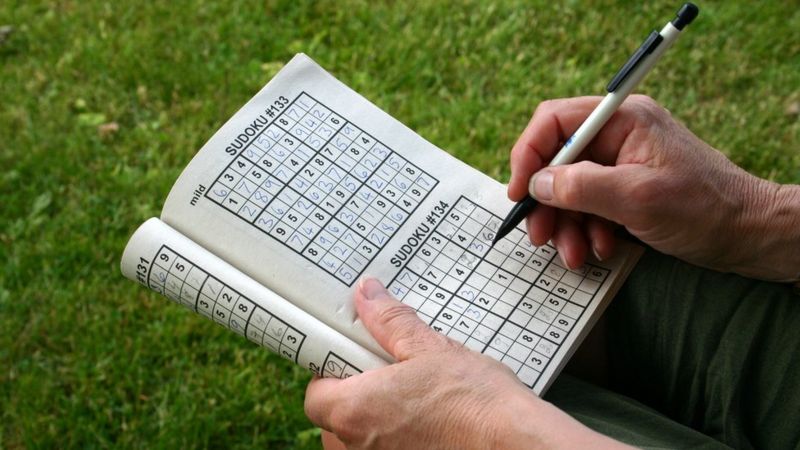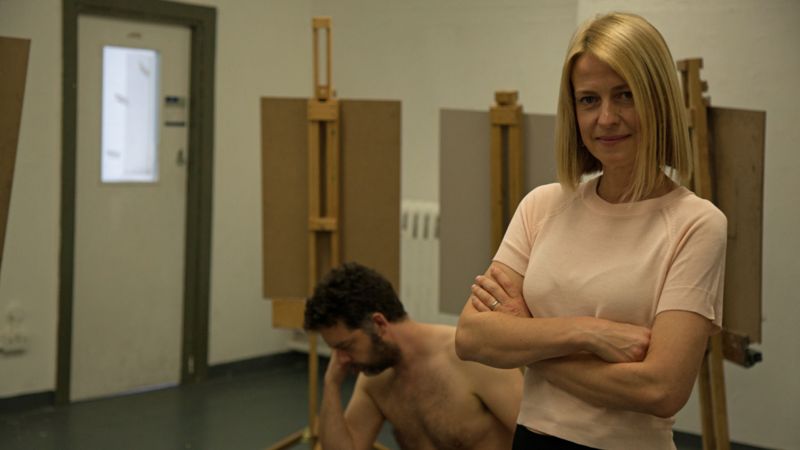N.B., Click on images to zoom.
'Semi Cubist Life Drawing'
Graphite on Paper. Four Hours.
'Semi Cubist Life Drawing'
Graphite on Paper. Four Hours.
The drawing above was done when I was about 18 years old. The drawing below was done fifty years later.
'Male Torso'
Conté Crayon on Paper. Forty Minutes.
There are some differences. For example, when I did the early drawing I was very keen on cubist/expressionist work. When I did the later drawing I had less interest in cubism/expressionism, plus I had far less time to spend on it. But in the main I hope they both look as if they were done by the same person.
I love to do Life Drawing, largely because I enjoy it. But I have always had the opinion that's it's a good thing for any artist to do. It's the best exercise for learning to focus; for understanding form and space; for honing manipulative skills; and for handling materials.
Now however, I hear of another reason why Life Drawing is a Good Thing. It boosts the grey cells!
Read on..............
What's the best way to fight memory loss?
- 14 July 2015
- Magazine
 Ask anyone over the age of 40 what worries them most about growing older and the answer that comes back is almost always the fear of losing your memory. I worry about the fact that I find it harder than ever to remember names and that without my phone to remind me, I would forget many of my daily appointments.There are some fairly obvious things to avoid if you want to maintain good brain health. These include smoking, becoming overweight and developing Type 2 diabetes. But what can you positively do to enhance your brain?
Ask anyone over the age of 40 what worries them most about growing older and the answer that comes back is almost always the fear of losing your memory. I worry about the fact that I find it harder than ever to remember names and that without my phone to remind me, I would forget many of my daily appointments.There are some fairly obvious things to avoid if you want to maintain good brain health. These include smoking, becoming overweight and developing Type 2 diabetes. But what can you positively do to enhance your brain?
Before we began our experiment all our volunteers were subjected to a barrage of tests that measured things like memory, ability to problem solve and general psychomotor speed (reaction times).
Everyone was then fitted with an activity monitor to measure how much and when they were moving.
The volunteers were then randomly allocated to three groups and asked to do a particular activity for the next eight weeks.
One group we simply asked to walk briskly, so that they were just out of breath, for three hours a week. The idea is that walking - in fact any form of vigorous exercise - will keep your brain fed with lots of oxygen-rich blood. This was not a popular choice with some.
"Walking is my least favourite activity," sighs Ann. (Newcastle does have punishingly steep hills.)

The second group were asked to do puzzles, such as crosswords or Sudoku. Again they had to do it for three hours each week. The reasoning behind this approach is that your brain, like a muscle, benefits from being challenged. Use it or lose it.
The final group were asked to stare at a naked man for three hours a week. Or, to be more accurate, they were asked to take part in an art class which also happened to involve drawing a naked man, Steve.
The results
By the end of our eight-week trial almost everyone in the walking group noticed a big improvement in their general health - how much easier they found managing a particular hill.
Some of the puzzler group had found the puzzles hard at first, but by the end of the eight weeks many were hooked and swapping Sudoku tips.

The most enthusiastic group, however, was undoubtedly the art class. Although a few found attending a class once a week daunting, all of them commented on how much they enjoyed it.
"I have become a compulsive drawer of everything," says Simone. "I have been out to buy myself some pastel pencils and even a book on 'How to'."
So, art equals pleasure, but which group enjoyed the greatest improvements in brain power?
Our scientists redid their battery of cognitive tests and the results were clear-cut. All the groups had got a bit better, but the stand-out group was those who had attended the art class.
It seems the naked man, Steve, had made a big impression.

But why should going to an art class make a difference to things like memory? Clinical Psychologist Daniel Collerton, one of our experts from Northumberland, Tyne and Wear NHS Trust and Newcastle University, says that part of the benefit came from learning a new skill. "Learning something new," he says, "engages the brain in ways that seem to be key. Your brain changes in response, no matter how many years you have behind you."
Learning how to draw was not only a fresh challenge to our group but, unlike the puzzlers, it also involved developing psychomotor skills. Capturing an image on paper is not just intellectually demanding. It involves learning how to make the muscles in your hand guide the pencil or paintbrush in the right directions.
An additional benefit was that going to the art class meant that for three hours a week they had to stand while drawing or painting. As we've shown before on Trust Me I'm a Doctor, standing for longer periods is a good way of burning calories and keeping your heart in good shape.
The art class was also the most socially active, another important thing to bear in mind if you want to keep your brain sharp. This group met regularly outside class, were keen to exchange emails and there was a definite social aspect to this intervention.

All of which meant that this group enjoyed a triple benefit when it came to boosting brain health. One of our volunteers, Lynn, says that learning to draw had produced other, unexpected benefits.
"Part of my job involves writing and pitching bids, which is a difficult and lengthy process," she explains. "I am dyslexic which is an added hurdle. But having done the art class I found that my writing now flows and my ability to concentrate has improved. It seems to have opened my mind. I'm not sure I can explain it properly, I just know it made a difference."
It is likely that any group activity which involves being active and learning a new skill will help boost your brain. Ballroom dancing, anyone?
Thanks to the BBC for this cheering news!
__________________________________________
And to see the 'Red' Virtual online competition/exhibition here is the link :-
__________________________________________________________________________________
And to see the 'Red' Virtual online competition/exhibition here is the link :-
__________________________________________________________________________________
quiz quiz quiz quiz quiz “details, details............” quiz quiz quiz quiz quiz
Who painted this young girl, and in which picture?
And here's the answer from the last posting -
'Diana Leaving her Bath.
by Boucher, 1742, Louvre, Paris
quiz quiz quiz quiz quiz “details, details............” quiz quiz quiz quiz quiz
"All truth passes through three stages. First, it is ridiculed. Second, it is violently opposed. Third, it is accepted as being self-evident."
Arthur Schopenhauer.
_____________________________________________________
. . . . and now, a Recommended Read . . . .
On Politics
This is a large book which looks a bit intimidating at first. But no . . it is so well written, so clear, without jargon or self-importance, and it covers all the main political concepts and figures since the early Greeks, explaining their thinking lucidly. Ryan is a previous Professor of Politics at Princeton, who is now Professor of Political Theory at New College, Oxford.
I read it from front to back three times, and now use it as a dip-in textbook to remind me about, for example, the similarities and differences of Stalinism and Fascism, the thoughts of Jeremy Bentham, or the Fourteenth Century Interregnum. It's all here, and anyone interested in politics will get so much from this book.
Published on Allen Lane
___________________________________________________________________________
_____________________________________________________
. . . . and now, a Recommended Read . . . .
On Politics
This is a large book which looks a bit intimidating at first. But no . . it is so well written, so clear, without jargon or self-importance, and it covers all the main political concepts and figures since the early Greeks, explaining their thinking lucidly. Ryan is a previous Professor of Politics at Princeton, who is now Professor of Political Theory at New College, Oxford.
I read it from front to back three times, and now use it as a dip-in textbook to remind me about, for example, the similarities and differences of Stalinism and Fascism, the thoughts of Jeremy Bentham, or the Fourteenth Century Interregnum. It's all here, and anyone interested in politics will get so much from this book.
Published on Allen Lane
___________________________________________________________________________
To subscribe to free email notifications
of my newest blogs, please go to the pull-out menu (on the right side of the main screen).
'Select 'SUBSCRIBE' and input your email address.
'Select 'SUBSCRIBE' and input your email address.
When you receive the email, you can go to the site itself by clicking on the blog title.
You can un-subscribe at any time.





